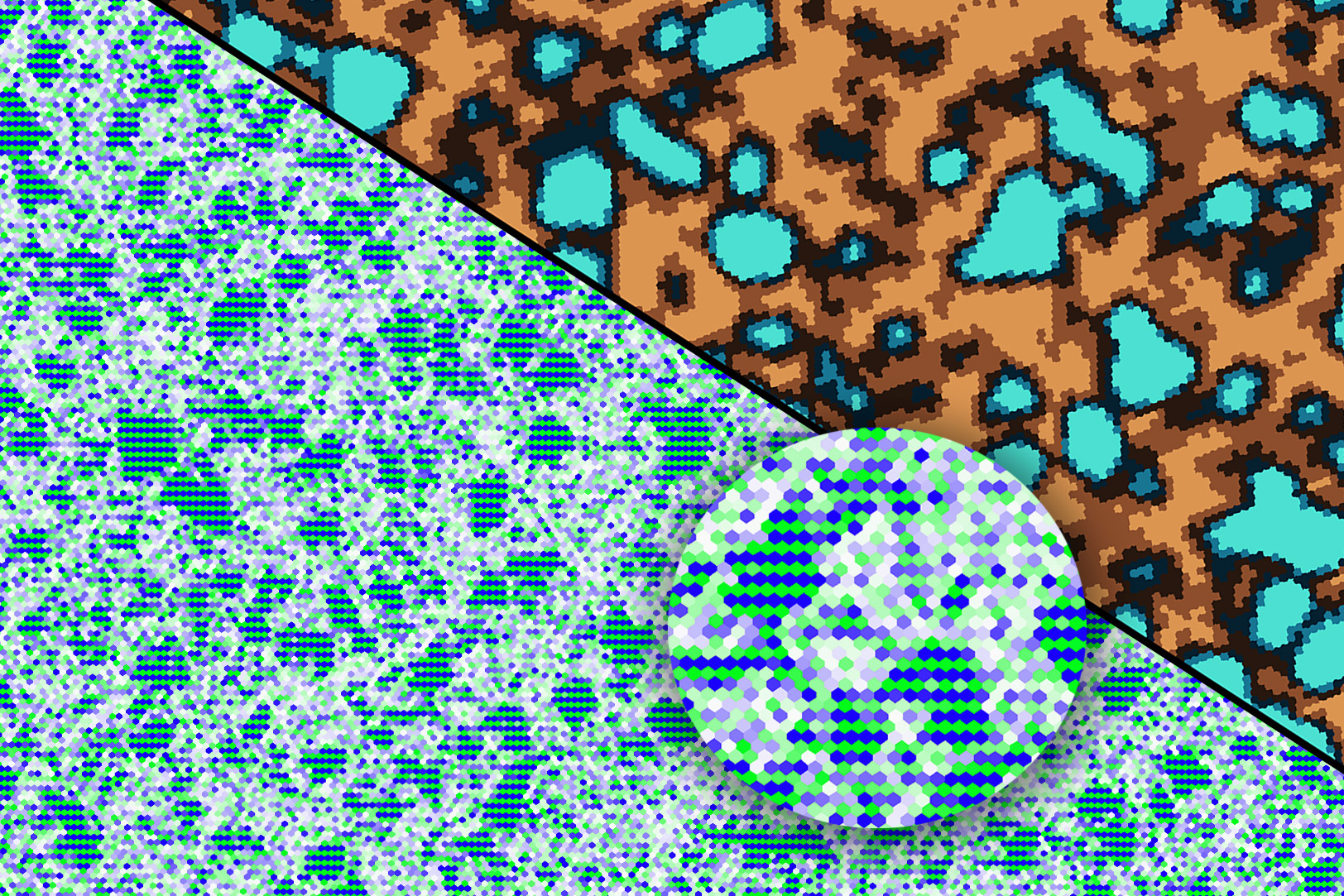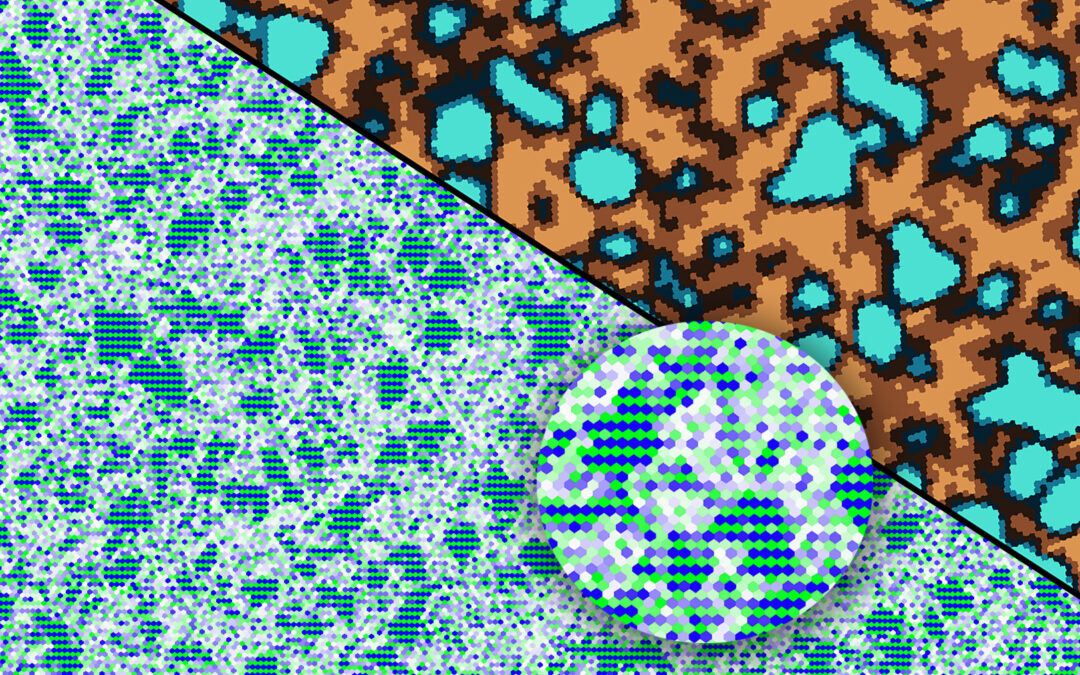
MIT engineers have developed a printable aluminum alloy that can withstand high temperatures and is five times stronger than conventionally made aluminum.
The new printable metal is made from a mixture of aluminum and other elements, and the team used a combination of simulation and machine learning to determine these elements, which greatly trimmed the number of possible combinations of search materials. While traditional methods require simulating more than one million possible combinations of materials, the team’s new machine learning-based approach requires only 40 possible compositions before determining the ideal mixture for high-strength, printable aluminum alloys.
When they printed the alloy and tested the resulting materials, the team confirmed that, as predicted, the aluminum alloy was as strong as the strongest aluminum alloy produced today using traditional casting methods.
The researchers believe that the new printable aluminum can be made into more powerful, lighter and temperature-resistant products, such as fan blades of jet engines. Fan blades are traditionally cast from titanium, which weigh more than 50%, are 10 times more expensive than aluminum, or are made of advanced composite materials.
“If we could use lighter, high-strength materials, this would save a lot of energy for the transportation industry,” said Mohadeseh Taheri-Mousavi, a postdoctoral fellow at MIT and now an assistant professor at Carnegie Mellon University.
“Because 3D printing can produce complex geometry, preserve materials and enable unique designs, we think that this printable alloy can also be used in advanced vacuum pumps, high-end cars and cooling equipment in data centers,” added John Hart, a 1922-class professor and head of mechanical engineering.
Hart and Taheri-Mousavi provide detailed information on the new printable aluminum design in papers published in journals Advanced Materials. MIT co-authors of the paper include Michael Xu, Clay Houser, Shaolou Wei, James Lebeau and Greg Olson, as well as Florian Hengsbach and Mirko Schaper of Paderborn University in Germany, and Zhaoxuan GE and Benjamin Glaser of Carnegie Mellon University.
miniature
The new work was developed by the MIT class obtained by Taheri-Mousavi in 2020, and the course was taught by Greg Olson, a professor of practice in the Department of Materials Science and Engineering. As part of the class, students learned to design high-performance alloys using computational simulations. Alloys are materials made of different combinations of elements that impart the characteristics of the entire material and other unique properties.
Olson challenged the aluminum alloy of this type of design, which will be stronger than the strongest printable aluminum alloy designed to date. Like most materials, the strength of aluminum depends largely on its microstructure: smaller and densely packs its microscopic composition or “precipitation”, the stronger the alloy.
With this in mind, this class uses computer simulations to combine aluminum with elements of various types and concentrations to simulate and predict the strength of the resulting alloy. However, this exercise failed to produce stronger results. At the end of the class, Taheri-Mousavi wonders: Can machine learning do better?
“At some point, there are a lot of things that can cause the properties of the material to contribute nonlinearly, and you’ll get lost,” said Taheri-Mousavi. “With machine learning tools, they can point you to where you need to focus and tell you that these two elements are controlling this feature. It allows you to explore the design space more effectively.”
layer
In the new study, Taheri-Mousavi continues to move forward where Olson’s class leaves, this time seeking to determine a stronger recipe for aluminum alloys. This time, she used machine learning techniques designed to effectively comb through data (such as the properties of elements) to identify critical connections and relevances that should lead to more desirable results or products.
She found that using only 40 compositions to mix aluminum with different elements, their machine learning method quickly used formulations with previously identified aluminum alloys with higher small precipitates and higher strength. The alloys are even more powerful than they can recognize after simulating more than one million possibilities without using machine learning.
To physically produce this new solid, small flavour alloy, the team realized that 3D printing would be possible instead of traditional metal casting, where molten liquid aluminum is poured into the mold and left to cool and harden. The longer the cooling time, the greater the possibility of individual precipitates growing.
Researchers show that 3D printing, also widely known as additive manufacturing, may be a faster way to cool and cure aluminum alloys. Specifically, they considered laser bed powder fusion (LBPF) – a technique where powder is deposited layer by layer onto the surface of the desired pattern and then quickly melted by laser on the track. The molten pattern is thin enough to be solidified quickly before another layer is deposited and similarly “printed”. The team found that LBPF’s inherent rapid cooling and curing enabled their machine learning approach to predict small, high-strength aluminum alloys.
“Sometimes we have to think about how to make the material compatible with 3D printing,” said study co-author John Hart. “Here, 3D printing opens new doors for new doors due to the unique characteristics of the process, especially the fast cooling rate. After the laser melts, the rapid freezing speed of the alloy freezes very quickly, creating this particular feature.”
The researchers put their idea into practice and ordered a formula for printable powder based on their new aluminum alloy formula. They sent a mixture of powder-aluminum and five other elements to their German collaborators, and they printed small samples of the alloy using their internal LPBF system. The sample was then sent to MIT, where the team conducted multiple tests to measure the strength of the alloy and to image the microstructure of the sample.
Their results confirm the predictions made by their initial machine learning search: printed alloys are five times stronger than their cast peers and 50% stronger than those used in regular-scale designs without machine learning. The microstructure of the new alloy also includes a higher volume of small precipitates, stable at high temperatures up to 400 degrees Celsius – the high temperature of aluminum alloys.
Researchers are applying similar machine learning techniques to further optimize other properties of the alloy.
“Our methodology opens new doors for anyone who wants to do 3D-printed alloy designs,” Taheri-Mousavi said. “My dream is that one day, passengers will look at the airplane windows and see engine fan blades made of aluminum alloy.”

 1005 Alcyon Dr Bellmawr NJ 08031
1005 Alcyon Dr Bellmawr NJ 08031
